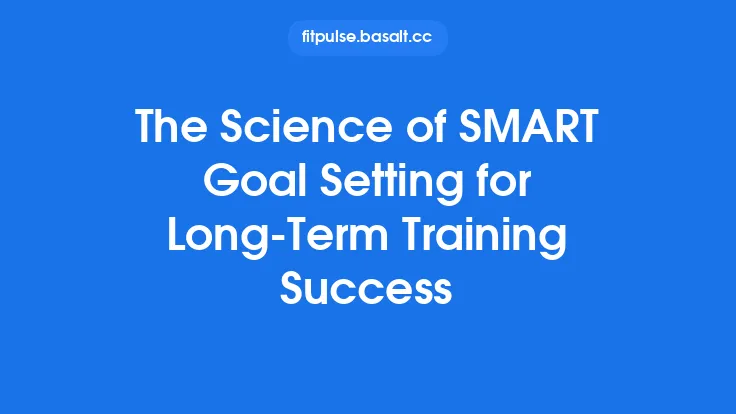The ability to anticipate what will happen next on the field separates good athletes from great ones. While raw speed and strength are obvious contributors to performance, the brain’s capacity to predict opponents’ actions, read subtle cues, and pre‑program the appropriate response is a decisive factor in fast‑paced team sports. This article explores the scientific foundations of anticipation, explains how the brain processes predictive information, and offers evergreen training strategies that can be woven into any sport‑specific program to sharpen game reads and accelerate decision speed.
Understanding Anticipation: The Neuroscience Behind Quick Reads
Anticipation is not a mystical talent; it is a measurable cognitive function rooted in the brain’s predictive coding system. When an athlete watches a play unfold, the visual cortex rapidly extracts salient features—body orientation, limb velocity, and contextual patterns. These inputs are fed forward to the dorsal stream, where the brain constructs a provisional model of the opponent’s likely next move. Simultaneously, the cerebellum fine‑tunes motor commands based on this model, allowing the body to initiate the appropriate response even before the final sensory confirmation arrives.
Two neural mechanisms are especially relevant:
- Mirror‑Neuron System (MNS) – Located in the premotor cortex and inferior parietal lobule, the MNS fires both when an athlete performs an action and when they observe the same action performed by another. This mirroring creates an internal simulation of the opponent’s movement, giving the observer a head start on predicting the outcome.
- Predictive Error Minimization – The brain constantly compares its predictions with incoming sensory data. When the discrepancy (prediction error) is small, the brain’s confidence in its model rises, leading to faster, more accurate anticipatory responses. Repeated exposure to specific game scenarios reduces prediction error over time, strengthening the neural pathways that support rapid reads.
Understanding these processes underscores why anticipation can be trained: repeated, targeted exposure reshapes the brain’s predictive networks through neuroplasticity.
Key Perceptual Cues Across Different Sports
Every sport offers a unique set of visual and kinesthetic cues that signal upcoming actions. Recognizing these cues is the first step toward building anticipatory expertise.
| Sport | Primary Cues | Why They Matter |
|---|---|---|
| Soccer | Angle of the foot, hip rotation, weight shift | Indicates direction of a pass or shot before the ball is struck |
| Basketball | Hand positioning, defender’s stance, eye gaze | Reveals intended passing lane or shot selection |
| Ice Hockey | Blade tilt, torso lean, stick angle | Predicts puck release direction and speed |
| Rugby | Shoulder alignment, foot placement, ball carrier’s grip | Signals breakaway runs or off‑load passes |
| Volleyball | Approach speed, arm swing trajectory, body tilt | Forecasts spike direction or set placement |
Coaches can create cue‑focused video libraries that isolate these elements, allowing athletes to train their visual system to latch onto the most informative signals.
Developing Pattern Recognition Through Deliberate Practice
Pattern recognition is the brain’s shortcut for anticipation. Instead of processing each visual element anew, the brain matches current observations to stored templates of previously encountered situations. Deliberate practice accelerates this matching process by:
- Chunking – Breaking down complex plays into smaller, repeatable units (e.g., “wing‑to‑center pass followed by a diagonal cut”). Repeated exposure to each chunk builds a library of micro‑patterns that can be recombined on the fly.
- Variable Practice – Mixing variations of a core pattern (different speeds, angles, or player positions) forces the brain to focus on invariant cues rather than superficial details, strengthening the underlying template.
- Error‑Focused Review – After a practice session, athletes review moments where their anticipation failed, identifying which cues were missed or misinterpreted. This metacognitive step consolidates learning and reduces future prediction errors.
By structuring practice around these principles, athletes develop a robust repertoire of patterns that can be accessed instantly during competition.
Neuroplasticity and Training the Anticipatory Brain
Neuroplasticity—the brain’s ability to reorganize its structure and function—underpins all skill acquisition, including anticipation. Two forms of plasticity are especially relevant:
- Synaptic Strengthening (Long‑Term Potentiation, LTP) – Repeated activation of specific neural pathways (e.g., those linking visual cue detection to motor preparation) increases synaptic efficacy, making the signal transmission faster and more reliable.
- Myelination – Frequent use of a neural circuit promotes the formation of myelin sheaths around axons, which speeds up electrical conduction. Studies on elite athletes have shown increased myelination in regions associated with sport‑specific visual‑motor integration.
Training protocols that maximize neuroplastic change should incorporate:
- High‑Frequency, Low‑Intensity Exposure – Short, frequent sessions (e.g., 5‑minute cue‑recognition drills performed multiple times per day) keep the relevant circuits active without inducing fatigue.
- Progressive Complexity – Start with isolated cues, then gradually add contextual layers (e.g., opponent positioning, game clock) to challenge the brain’s predictive capacity.
- Rest and Consolidation – Sleep and brief rest periods are critical for synaptic consolidation; scheduling anticipatory drills early in the day can leverage overnight memory processing.
Mental Imagery and Simulation Techniques
When physical practice is limited—due to injury, travel, or schedule constraints—mental rehearsal offers a powerful alternative. Imagery activates many of the same neural substrates as actual movement, particularly within the MNS and premotor areas.
Effective imagery practice follows the PETTLEP framework:
- Physical: Replicate the posture and equipment used in the sport.
- Environment: Visualize the actual playing surface, lighting, and crowd noise.
- Task: Focus on the specific anticipatory cue and the intended response.
- Timing: Keep the imagined action at real‑time speed.
- Learning: Align the imagery with current skill level and training goals.
- Emotion: Incorporate the arousal level expected during competition.
- Perspective: Use a first‑person view to enhance sensorimotor fidelity.
Research shows that athletes who combine physical cue drills with daily 10‑minute imagery sessions improve anticipatory accuracy up to 15 % more than those relying on physical practice alone.
Eye Movement Training and Peripheral Vision
Fast reads depend heavily on where the eyes look and how the visual field is processed. Two eye‑movement components are crucial:
- Saccadic Efficiency – Rapid, ballistic eye movements that reposition the fovea onto new points of interest. Training saccades with light‑board drills or computer‑based tracking tasks reduces latency and improves the speed of cue acquisition.
- Peripheral Sensitivity – The ability to detect motion and orientation changes outside the central focus. Exercises such as “cone‑catch” (where athletes maintain central fixation while peripheral objects move) expand the functional visual field, allowing athletes to monitor multiple opponents simultaneously.
Incorporating a brief (2‑3 minute) eye‑movement warm‑up before each training block can prime the visual system for optimal anticipatory performance.
Temporal Occlusion Training: Seeing the Future
Temporal occlusion involves presenting video clips of game situations that stop just before a critical action (e.g., a pass, shot, or tackle). Athletes must predict the outcome based on the information available up to that moment. This method directly trains the brain’s predictive coding by forcing it to generate a hypothesis before the final sensory confirmation.
Key design considerations:
- Occlusion Timing – Begin with clips ending 300 ms before the decisive moment, then gradually reduce the lead‑time to 100 ms as proficiency improves.
- Feedback Loop – Immediately reveal the actual outcome after the athlete’s prediction, reinforcing correct cue‑outcome associations.
- Contextual Variety – Use clips from different levels of play (youth, collegiate, professional) to expose athletes to a broad spectrum of cue reliability.
Studies have demonstrated that athletes who engage in regular temporal occlusion training improve their on‑field anticipation speed by 10‑20 % without additional physical conditioning.
Integrating Anticipation Drills into Regular Practice
To ensure that anticipation training translates to game performance, it must be embedded seamlessly within the broader practice structure:
- Warm‑Up Activation – Begin with 2‑minute eye‑movement drills followed by a quick cue‑recognition circuit (e.g., “spot the defender’s shoulder angle”).
- Skill Block Integration – Pair technical drills with anticipatory cues. For instance, during a passing drill, coaches can randomly introduce a defender’s body language that signals a forced pass direction.
- Transition to Game‑Speed – After isolated cue work, move to full‑field scrimmages where athletes are instructed to verbalize the cue they acted upon before executing the response. This reinforces the cue‑action link under realistic pressure.
- Cool‑Down Reflection – End each session with a brief mental imagery recap, where athletes close their eyes and replay the most challenging anticipatory moments, visualizing successful reads.
By weaving anticipation into every phase of practice, athletes develop a habit of constantly scanning for predictive information rather than reacting only after the fact.
Assessing Progress Without Overreliance on Metrics
While objective data (e.g., reaction‑time recordings) can be useful, the focus of anticipation training is qualitative improvement. Effective assessment methods include:
- Cue‑Recall Interviews – After a drill or game, ask athletes to list the specific cues they noticed and how those informed their decisions. Consistent, detailed recall indicates deeper pattern encoding.
- Video‑Based Self‑Review – Athletes watch short clips of their own play and annotate moments where they correctly anticipated versus missed cues. This promotes self‑diagnosis and reinforces learning.
- Coach Observation Checklists – Simple binary checklists (e.g., “identified opponent’s weight shift before pass”) allow coaches to track improvement over time without complex statistics.
These approaches keep the emphasis on perceptual learning rather than purely numerical performance.
Practical Tips for Coaches and Athletes
- Start Small – Introduce one cue per week; mastery of a single visual signal builds confidence before adding complexity.
- Use Multi‑Modal Cues – Combine visual, auditory, and kinesthetic information (e.g., a teammate’s grunt before a shot) to create richer predictive models.
- Encourage “Pre‑Play” Scanning – Teach athletes to perform a quick 3‑second visual sweep before each play, noting opponent positioning and body language.
- Leverage Everyday Situations – Encourage athletes to practice cue detection in non‑sport contexts (e.g., predicting a driver’s turn while walking) to strengthen general anticipatory skills.
- Maintain Variety – Rotate drills, video clips, and imagery scenarios to prevent neural habituation and keep the brain’s predictive system adaptable.
By grounding training in the science of predictive coding, mirror‑neuron activation, and neuroplastic adaptation, coaches can systematically enhance an athlete’s ability to read the game faster and more accurately. The strategies outlined above are timeless, adaptable across sports, and can be integrated into any training calendar, ensuring that athletes not only react to the present but anticipate the future—turning split‑second insights into decisive advantages on the field.





